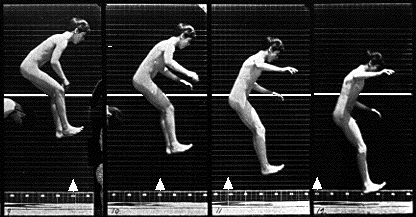
Fashioning the Body: Versions of the Citizen, the Self, and the Subject
The Evergreen State College | Fall 2007-Winter 2008
User Login |
Corpus - The Politics of Thomas KinkadeThis is a follow up to yesterday’s seminar, when I tried to make the point that all art is political. Someone suggested that surely Thomas Kinkade is not political. I completely disagree. He paints an “ideal world” for his customers. Anything that represents what an ideal world would look like is making statements about how things should be, and how they shouldn’t be. And we can (should?) disagree. I dug up an old New Yorker article I remembered about Thomas Kinkade. It’s from the October 15, 2001 issue, it’s called “Art for Everybody,” and it’s by Susan Orlean. You can find it on Proquest. Here are a few quotes from it that I thought were important and relevant:
“Not only the highlighters but the gallery staff, the Media Arts receptionists, even the people who build the frames and stretch the canvases know Kinkade's biography by heart: … That when he was twenty he experienced a Christian awakening, and that it changed his art--it stopped being about his fears and anxieties and became optimistic and inspirational, with themes like home towns and perfect days and natural beauty, and millions of people responded. It's as good a story as you could hope for if you want to make a point about perseverance and pulling yourself up by your bootstraps and appreciating life's bounty; even the bad parts of the story are good, because it's easier not to begrudge Kinkade his fortune when you are reminded that he was a poor kid who had to struggle, who rejected the smarty-pants liberal establishment to follow his heart, and who is proud of having earned his way into the ultimate American aristocracy of successful entrepreneurs.” An essential part of the Thomas Kinkade biography is about his Christian awakening. His biography is a part of his persona, which is obviously very important to the paintings. They’re sold in galleries named after him, after all. His art is intended to inspirational. It’s religious. Also, he markets his art through the old Horatio Alger story – everyone in America can become successful if they try hard enough! That must be very reassuring to the people who can afford to spend over a thousand dollars on a Thomas Kinkade print . . . “People like to own things they think are valuable, and they are titillated by the prospect that the things they own might be even more valuable than they thought. The high price of limited editions is part of their appeal: it implies that they are choice and exclusive, and that only a certain class of people will be able to afford them--a limited edition of people with taste and discernment. "I created a system of marketing compatible with American art," Kinkade said to me recently. "I believe in 'aspire to' art. I want my work to be available but not common. I want it to be a dignified component of everyday life. It's good to dream about things. It's like dreaming of owning a Rolex--instead, you dream about owning a seventy-five-thousand-dollar print." In fact, a lot of limited- edition art is about dreaming; so many of the paintings portray wistful images of a noble and romantic past that never was, or the anti-intellectual innocence of fairies and animals, or mythical heroes who can never fail and never fade.” The whole structure of how his art is sold and thought about glorifies upward mobility, another part of the pull-yourself-up-from-the-bootstraps myth of America. “Last month, Taylor Woodrow Homes and Media Arts Group opened The Village, a Thomas Kinkade Community, a gated development in Vallejo, California. According to promotional material, it is a "magical community" featuring "meandering sidewalks, benches and water features, which are designed to enrich homeowners' lives with endless visual surprises and delights." There are four house models available, and they are named after Kinkade's four daughters--Chandler, Merritt, Everett, and Winsor--and will be priced from four hundred thousand dollars up.” Kinkade has made a physical copy of his ideal America, and it’s a gated suburb! Note the use of “homeowners” instead of, say, “community members.” There’s an emphasis here on private property ownership and safety from the outside world (which certainly doesn’t live up to Kinkadian ideals). A quote from Kinkade: “See, I have faith in the heart of the average person. People find hope and comfort in my paintings. I think showing people the ugliness of the world doesn't help it. I think pointing the way to light is deeply contagious and satisfying.” What would Brecht say? I think choosing to cover up “the ugliness of the world” so people don’t have to see and think about it is definitely a political decision . . .
Submitted by Spencer on Thu, 11/01/2007 - 9:26am. Spencer's blog | login or register to post comments | printer friendly version
|
Who's onlineThere are currently 0 users and 1 guest online.
Events
|
||||||||||||||||||||||||||||||||||||||||||||||||||||||||